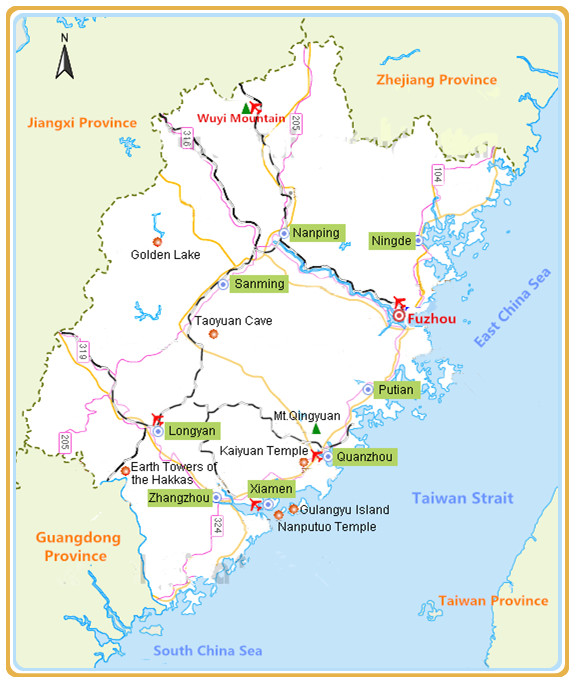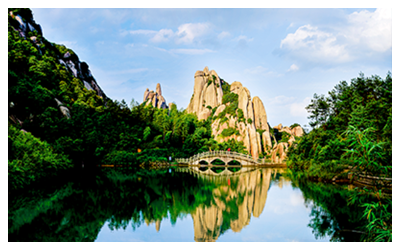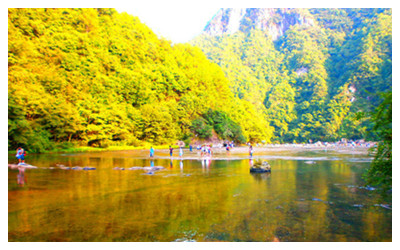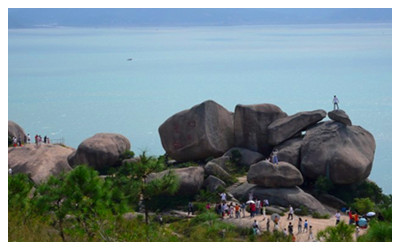Skype: neodalle-travel
Tel: +86 135 7447 2266
E-mail: sales@visitaroundchina.com
 Ningde City is a prefecture-level city located along the northeastern coast of Fujian province, China. It borders Fuzhou to the south, Wenzhou City and Zhejiang province to the north, and Nanping City to the west. Situated roughly 300 kilometers north of the Tropic of Cancer, Ningde spans 13,500 square km in land area. Like the rest of Fujian province, Ningde sits in a mountainous region but it also enjoys 878km of coastline facing the Taiwan Strait and East China Sea. Ningde has a population of over 3.3 million. It is also the primary residential region for the She minority people, who take up 24.72% of the population.
Ningde City is a prefecture-level city located along the northeastern coast of Fujian province, China. It borders Fuzhou to the south, Wenzhou City and Zhejiang province to the north, and Nanping City to the west. Situated roughly 300 kilometers north of the Tropic of Cancer, Ningde spans 13,500 square km in land area. Like the rest of Fujian province, Ningde sits in a mountainous region but it also enjoys 878km of coastline facing the Taiwan Strait and East China Sea. Ningde has a population of over 3.3 million. It is also the primary residential region for the She minority people, who take up 24.72% of the population. |
 |
 |
| Taimu Mountain | Baishuiyang and Yuanyang Stream | Sandu Bay |
When to visit Ningde?
Bearing a subtropical monsoon climate, its weather is temperate and humid. The annual average temperature remains around 19 C (66
C (66 F). March to June is the plum rain period, and July to September is the season of typhoon and thunder storm. This period gathers about eighty percent of a year's rainfall. It is the best time to visit Ningde from April to November.
F). March to June is the plum rain period, and July to September is the season of typhoon and thunder storm. This period gathers about eighty percent of a year's rainfall. It is the best time to visit Ningde from April to November.
How to visit Ningde?
The 104 National Road runs through the center of Ningde connecting Fuzhou and Wenzhou. Local long-distance bus station is just located on the road, which is the busiest section of the city. The bus station offers six airport buses daily to Fuzhou Changle International Airport in two hours. Through the Shenyang-Haikou Expressway passing by the city, regular buses will get to Fuzhou and Wenzhou within two hours.
Bus stations of Gutian County, Pingnan County and Fu'an City operate buses to the Mount Wuyi. The whole journey will cost about six to eight hours.
Ningde Travel Tips
Special Local Products: sweet potato, tea, oil tea, tremella (white fungus), sea product
local Culture:The folk arts in Ningde are varied and colorful. Among them bangtieji parade, puppet lion dance, and paper art are the most representative. The She people have also created and left many precious cultural heritages in their long historical practice. Owing to projects in recent years to protect the She heritage, three volumes of She folk tales, songs and proverbs have been published. In total, 184 tales, 330,000 words in songs, and 6,000 proverbs have been included. Art works have also been produced out of She folklore, which reflects their way of life. There are many covered bridges in Ningde, particularly in Pingnan.
 Ask Questions ?
Ask Questions ?